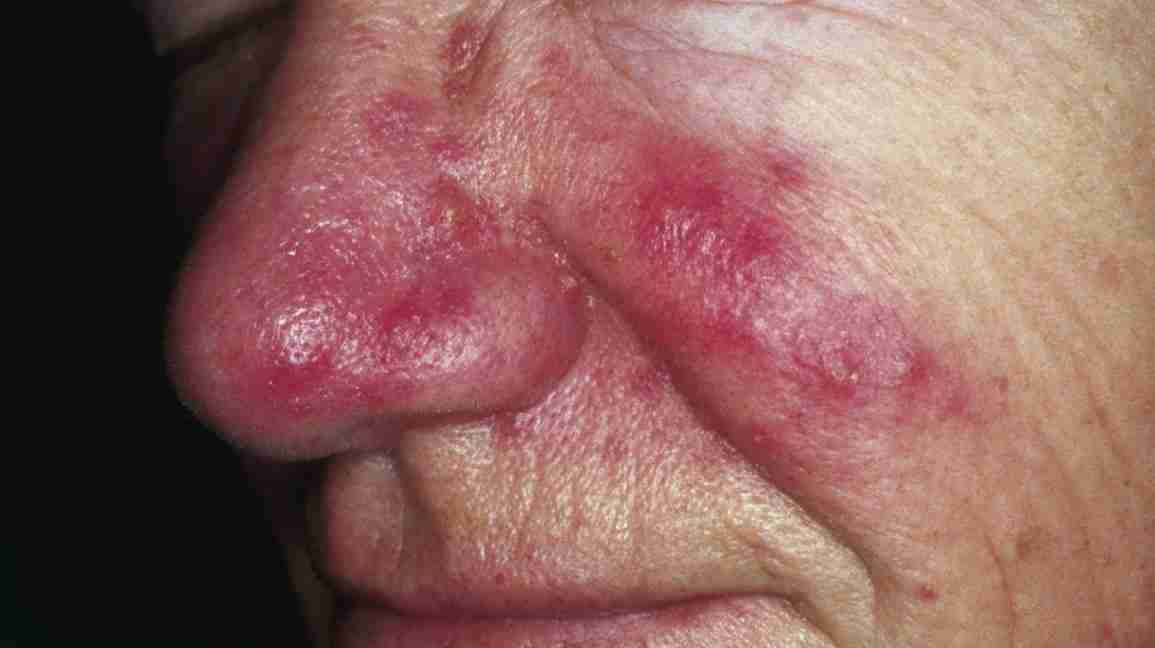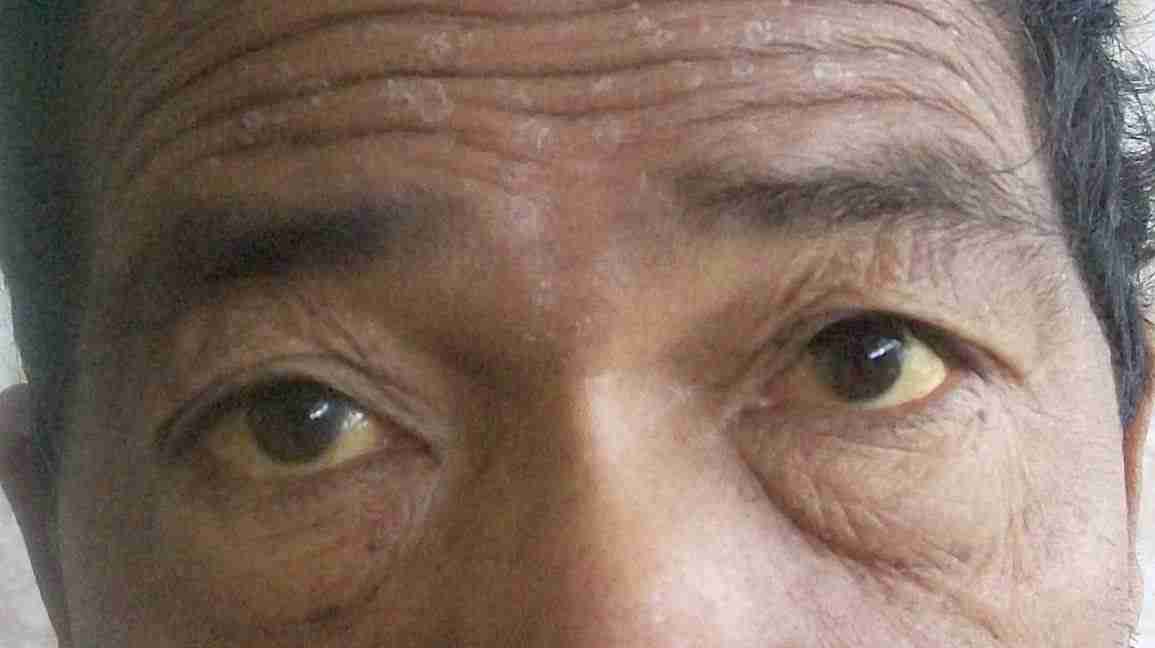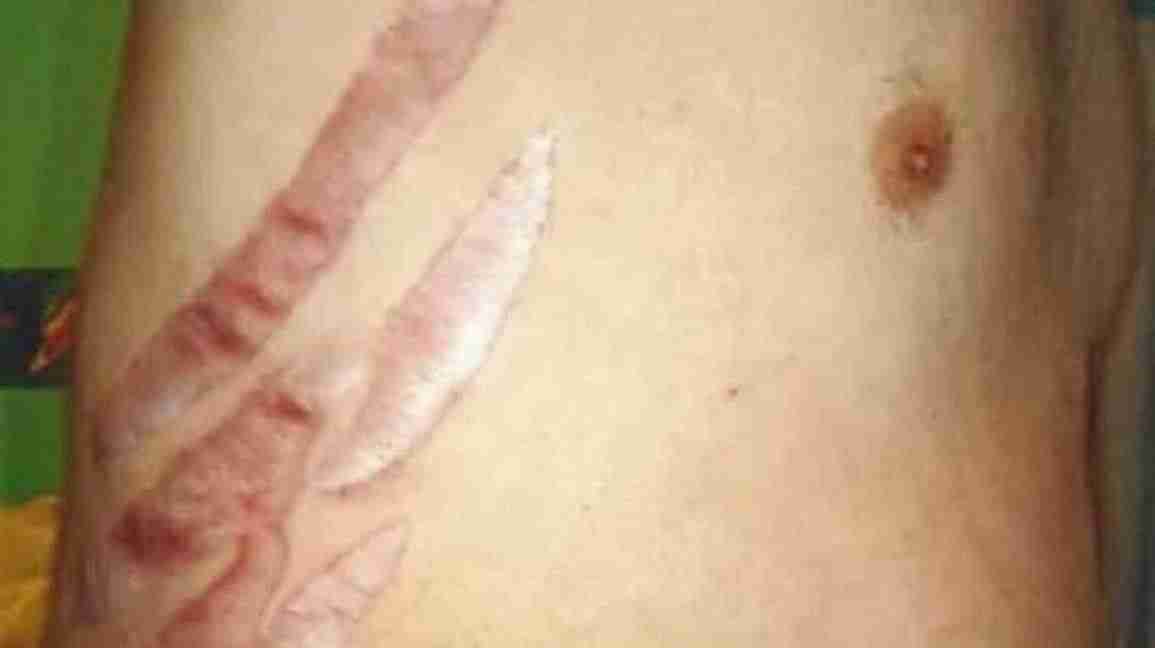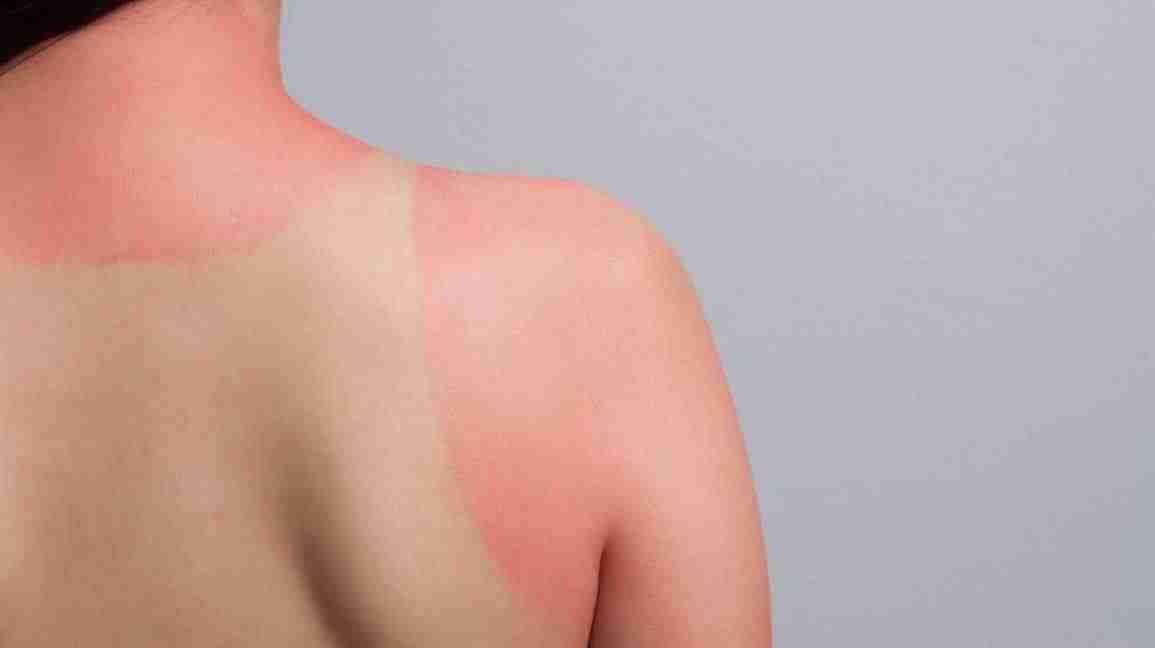Skin flushing or blushing describes feelings of warmth and rapid reddening of your neck, upper chest, or face. Blotchiness or solid patches of redness are often visible when blushing.
Flushing happens as a result of increased blood flow. Whenever there is more blood flow to an area of skin (such as your cheeks), the blood vessels enlarge to compensate. This enlargement is what gives skin the “flushed” effect.
Flushed skin is a common physical response to anxiety, stress, embarrassment, anger, or another extreme emotional state. Facial flushing is usually more of a social worry than a medical concern.
However, flushing may be linked to an underlying medical issue, such as Cushing disease or a niacin overdose. Be sure to check with your healthcare provider if you have recurring skin flushing or blushing.
Many different conditions can cause skin flushing. Here is a list of 13 possible causes.
Warning: Graphic images ahead.
Menopause
- This occurs when hormone production in the ovaries decreases and menstrual periods stop permanently.
- The symptoms women experience are primarily related to a lowered production of the female sex hormones estrogen and progesterone.
- Symptoms of menopause may include hot flashes, vaginal dryness and pain with intercourse, insomnia or problems sleeping, frequent urination or urinary incontinence, decreased libido, depression and mood swings, and vaginal atrophy.
- Menopause symptoms can last for months or years depending on the person.
Read full article on menopause.
Rosacea

- This chronic skin disease goes through cycles of fading and relapse.
- Relapses may be triggered by spicy foods, alcoholic beverages, sunlight, stress, and the intestinal bacteria Helicobacter pylori.
- Four subtypes of rosacea encompass a wide variety of symptoms.
- Common symptoms include facial flushing, raised red bumps, facial redness, skin dryness, and skin sensitivity.
Fifth disease
- Symptoms include fatigue, low fever, sore throat, runny nose, diarrhea, and nausea.
- Children are more likely than adults to experience a rash.
- Rash is typically round and bright red on the cheeks.
- Lacy-patterned rash on the arms, legs, and upper body might be more visible after a hot shower or bath.
Read full article on fifth disease.
Agoraphobia
- This anxiety disorder causes people to avoid places and situations that might make them feel trapped, helpless, or embarrassed.
- It's more common in women than in men.
- It causes fear of leaving the home for extended periods of time, fear of being alone in social situations, and fear of being in places where it would be difficult to escape, like a car or elevator.
- Other symptoms include feelings of fear or dread, nausea, increased heart rate, chest pain, dizziness, trembling, sweating, chills, diarrhea, numbness, and tingling when exposed to a triggering situation.
Read full article on agoraphobia.
Scarlet fever

- Scarlet fever occurs at the same time as or right after a strep throat infection.
- Typically there is a red skin rash all over the body (but not the hands and feet).
- Rash is made up of tiny bumps that make it feel like “sandpaper.”
- Another symptom is a bright red tongue.
Read full article on scarlet fever.
Hyperthyroidism
- This condition occurs when the thyroid gland makes too much thyroid hormone.
- It’s caused by a variety of conditions including autoimmune disease, tumors, medications, excess iodine, or inflammation.
- Symptoms are due to an excessively high metabolic rate triggered by too much hormone.
- Symptoms include rapid heart rate, elevated blood pressure, hand tremors, low tolerance for heat, diarrhea, weight loss, nervousness, restlessness, difficulty sleeping, fine or brittle hair, nausea and vomiting, and menstrual irregularities.
Read full article on hyperthyroidism.
Pyelonephritis
- Pyelonephritis is a serious infection located in the upper parts of the urinary tract including the kidneys.
- It’s treated with antibiotics.
- Common symptoms include fever, chills, body aches, nausea, vomiting, and pain in the abdomen, groin, or back.
- Cloudy or bloody urine, pain with urination, and frequent urination may also occur.
Read full article on pyelonephritis.
Cluster headaches
- These severely painful headaches occur in clusters or cycles.
- Constant and deep burning or piercing pain occurs on one side of the head, but can switch sides.
- Cluster headaches are generally located behind or around the eye.
- Pain may spread to the forehead, temples, teeth, nose, neck, or shoulders on the same side.
- A droopy eyelid, constricted pupil, excessive tearing, eye redness, sensitivity to light, swelling under or around one or both of your eyes, a runny nose or stuffy nose, and nausea are possible symptoms.
Read full article on cluster headaches.
Yellow fever

- Yellow fever is a serious, potentially deadly, flu-like viral disease spread by mosquitoes.
- It's most prevalent in certain parts of Africa and South America.
- It can be prevented with a vaccination, which may be required if you are traveling to endemic areas.
- Initial symptoms of the infection are similar to those of the influenza virus, including fever, chills, headache, body aches, and loss of appetite.
- During the toxic phase of infection, initial symptoms may disappear for up to 24 hours and then return along with symptoms of decreased urination, abdominal pain, vomiting, heart rhythm problems, seizures, delirium, and bleeding from the mouth, nose, and eyes.
Read full article on yellow fever.
Autonomic hyperreflexia
This condition is considered a medical emergency. Urgent care may be required.
- With this condition, your involuntary nervous system overreacts to external or bodily stimuli.
- It's most commonly seen in people with spinal cord injuries above the sixth thoracic vertebra, or T6.
- It may also affect people who have multiple sclerosis, Guillain-Barré syndrome, and certain head or brain injuries.
- Symptoms include irregular or racing heartbeat, high blood pressure with systolic (top) readings often over 200 mm Hg, profuse sweating, flushing of the skin, confusion, dizziness, and dilated pupils.
Read full article on autonomic hyperreflexia.
Cushing syndrome

- Cushing syndrome occurs due to abnormally high levels of the hormone cortisol in the blood.
- Symptoms include weight gain, obesity, and fatty deposits, especially in the midsection, the face (giving it a round, moon shape), and between the shoulders and the upper back (causing a buffalo hump).
- Purple stretch marks on the breasts, arms, abdomen, and thighs, and thinning skin that bruises easily and heals slowly are other symptoms.
- Additional symptoms include acne, fatigue, muscle weakness, glucose intolerance, increased thirst, bone loss, high blood pressure, headaches, and increased risk of infection.
- Psychological symptoms include cognitive dysfunction, anxiety, and depression.
Read full article on Cushing syndrome.
Niacin overdose
- Niacin flush is a common and harmless side effect of taking high doses of supplemental niacin (vitamin B-3).
- Symptoms include a flush of red on the skin soon after taking niacin, which may be accompanied by an itching or burning sensation.
- Tolerance and a decrease in symptoms may occur over time.
Read full article on niacin overdose.
Sunburn
- This is a superficial burn on the outermost layer of skin.
- Symptoms include redness, pain, and swelling.
- Dry, peeling skin typically occurs after the first few days of sunburn.
- More severe, blistering burns may occur after extended periods of sun exposure.
There are many specific causes of facial flushing, such as a heightened emotional state or eating spicy food. Several medical conditions are also linked to skin flushing. Listed below are some common causes of flushing.
Cushing syndrome
Cushing syndrome is a result of high levels of cortisol in the body.
Medications
A niacin (vitamin B-3) overdose can cause redness. This happens when you take too much over-the-counter niacin medication to lower your cholesterol. Other medications that can cause flushing include:
- corticotropin-releasing hormone
- doxorubicin
- glucocorticoids
- vasodilators (e.g., nitroglycerin)
- calcium channel blockers
- morphine and other opiates
- amyl nitrite and butyl nitrite
- cholinergic drugs (e.g., metrifonate, anthelmintic drugs)
- bromocriptine used in Parkinson’s disease
- thyrotropin-releasing hormone (TRH)
- tamoxifen
- cyproterone acetate
- oral triamcinolone
- cyclosporine
- rifampin
- sildenafil citrate
Spicy foods
Consuming spicy foods, such as peppers or products derived from the Capsicum (pepper) genus of plants, can cause sudden redness in the face or neck. These include cayenne pepper, paprika, chili peppers, and red peppers.
Eating these foods may raise your body temperature, increasing blood flow and causing facial redness. Handling these types of foods can also cause skin redness and irritation.
Emotional triggers
Extreme emotions can trigger redness in the face or red face. For example, if you become deeply embarrassed or anxious, your face or neck may appear splotchy.
Experiencing feelings of extreme anger, stress, or sadness may also cause skin flushing. Crying can often cause red blotches on the face and neck.
All of these emotions can also coincide with an acute increase in blood pressure. Still, high blood pressure itself is not a cause of flushing, according to the American Heart Association.
Rosacea
Rosacea is a skin condition that may produce swelling, redness, and acne-like sores.
While the cause of rosacea is unknown, inflammation of the blood vessels from stress, spicy foods, and hot temperatures may worsen the condition. Fair-skinned females between the ages of 30 and 50 are the most susceptible.
Fifth disease
Fifth disease is caused by a virus and can result in a red rash on the cheeks, arms, and legs. It’s commonly spread among elementary school-aged children and usually results in mild flu-like symptoms. A red rash from fifth disease is more likely to appear in children than adults.
Other causes
Other, less common causes of facial blushing or red face include:
- drinking alcohol, especially red wine
- high temperatures
- fever
- cold weather
- menopause
- carcinoid syndrome
- sunburn
- skin infections
- inflammatory conditions
- allergies
- agoraphobia
- scarlet fever
- hyperthyroidism
- pyelonephritis
- cluster headaches
- yellow fever
- autonomic hyperreflexia
There are several home health options available to help you decrease your flushing episodes.
If home health options don’t prevent or lessen the frequency of these episodes, see your healthcare provider immediately. It may mean that you have an underlying medical condition causing this sudden redness.
Home health options
Home health options include avoiding specific triggers, such as spicy foods, hot beverages, toxins, bright sunlight, and extreme cold or heat. Removing yourself from high-stress situations may also help prevent flushing.
If your flushing doesn’t subside, make an appointment with your healthcare provider.
Flushing does not commonly result in serious medical problems. However, in some instances, a serious condition can be the underlying cause of flushing. It’s important to talk to your healthcare provider about all of your symptoms.
Also, pinpointing your triggers can help prevent bouts of flushing. If your trigger is emotional, flushing can become more prevalent if you don’t develop adequate coping skills to help manage your emotions.
There is no definitive method for preventing flushing. However, there are some things you can do to reduce the risk of these episodes:
- Limit the amount of alcohol you drink. Some people are more prone to redness and warmth on the skin after drinking alcohol. In these people, an enzyme that helps break down alcohol is inactive.
- Limit your handling and eating of spicy foods, especially those derived from the Capsicum genus (peppers).
- Try to avoid extreme temperatures and excessive bright sunlight.
- Limit your niacin intake to the daily recommended allowance of 14 to 16 milligrams for adults, unless your healthcare provider tells you differently. Consuming more than 50 milligrams of niacin can cause flushing.
- Employ coping skills to regulate extreme emotions, such as anxiety.
Helpful coping skills include relaxation techniques and cognitive behavioral skills. Also, hypnosis may be effective in treating some emotional issues that produce flushing.
In many cases, occasional flushing is more of a hassle than a medical concern. Taking preventive steps to address your flushing can be very helpful in reducing your symptoms.
However, it’s important to seek immediate medical care for unusual symptoms of flushing. You should also see your healthcare provider for recurring episodes, since flushing can be linked to serious medical conditions.
Talk to your healthcare provider if your flushing becomes a persistent issue or if it occurs with other symptoms, such as diarrhea.
Your healthcare provider will likely want to take an inventory of your symptoms to determine the underlying cause of your flushing. They may ask you about the frequency, duration, location, and context of your symptoms.
A medical exam and history will help supply required information for your healthcare provider to make a diagnosis. Be sure to mention other co-occurring symptoms, such as diarrhea, shallow breathing, or hives, so that your provider may evaluate them.
If your provider finds your symptoms are emotionally based, they may refer you to a psychotherapist. These professionals can teach you skills to help you cope with extreme emotional events and prevent flushing.
